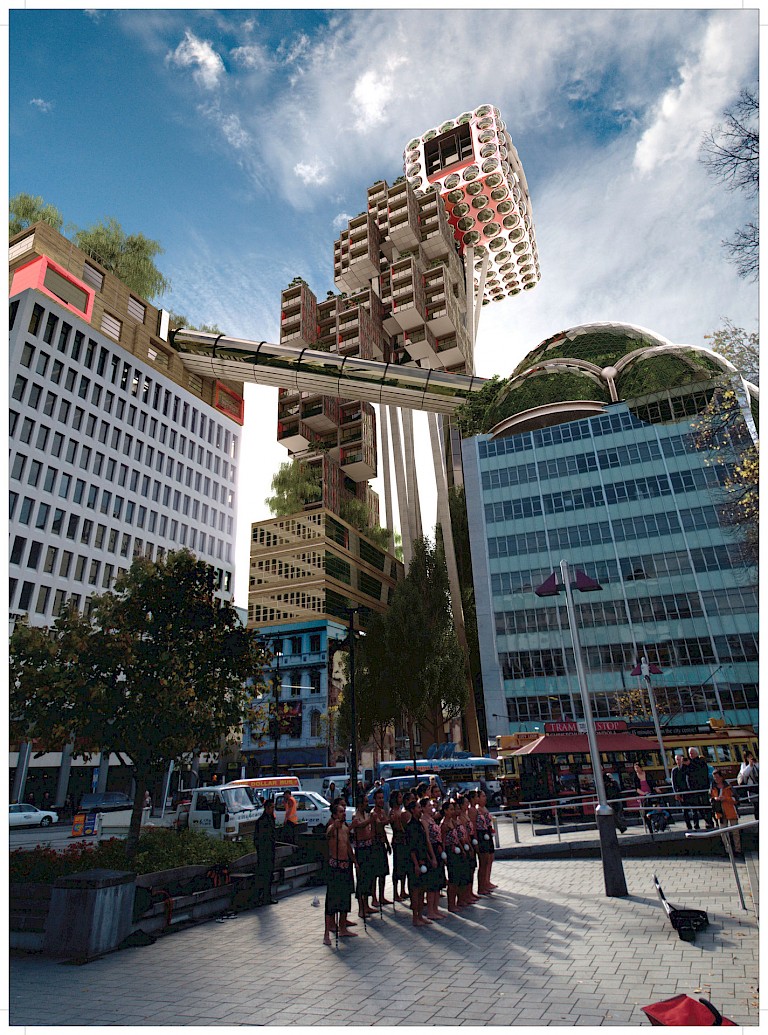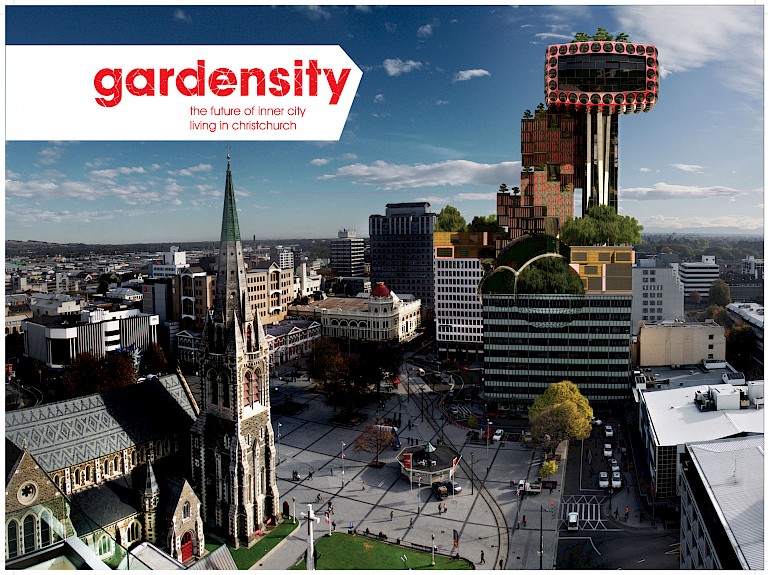



In Gardensity, Christchurch’s Government Life Tower building was reimagined and transformed into an agglomeration of geodesic domes housing a rainforest and winter garden, restaurant, and café. The Sevicke Jones was repurposed to include cafes, bookshops, and design stores on the ground floor and studios and apartments above. The Harper building was turned into a space that could be used as a gallery, museum, environmental research center, or urban laboratory. Some adjacent vacant land was transformed into a public space with a native forest and glass elevator towers to provide access to all levels of the development. The Sky-Loft building of Gardensity was open to several possible uses, such as a library, planetarium, offices, restaurants, and relaxation rooms.
With the aim of achieving the highest Green Star rating to date, all building materials in Gardensity would be required to be sourced locally, including all recycled and renewable materials. The design also included passive solar, waste recycling systems, rainwater harvesting, and wind power.
Because of the September 4, 2010 earthquake in Christchurch, SCAPE6 was delayed. Keating turned his attention to intensively managing Gardensity’s internet-based discussion about the future of Christchurch City. Community involvement turned out to be one of the most important aspects of the project. Largely because of the earthquake, the online discussion forum and Facebook discussion became much more intense and important than the artist had anticipated. “The discussion drew in many laypeople who wouldn’t ordinarily participate in a discussion about urban development, and helped them to understand how the architectural innovations depicted could help solve the city’s problems,” says Keating.
When the final physical installation of Gardensity was opened—in October 2010, well before SCAPE6, which was ultimately delayed to August 2011—it contained not only the architectural animation, but also an archive of the discussions on a computer inside the structure. While absurd, the architectural rendering of Gardensity helped connect with people to the very real similar animations that had been commissioned by the Christchurch City Council at that time. And the discussions on Gardensity’s online forum paved the way for people to contribute to the Council’s “Share An Idea” initiative, which also launched in late 2010.
All copyright belongs to Shanghai Academy of Fine Arts, Shanghai University.


